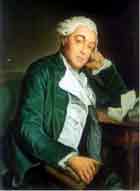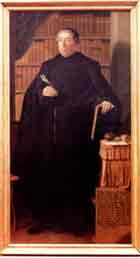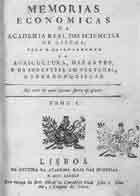 |
|
|
|
|
The Duke of Lafões
|
|
Founded in 1779, it moved place six times until it finally found its home in the Convent of Christ of the Third Order of S. Francisco in 1833, where it is still today.
Throughout the seventeenth and eighteenth centuries, scientific academies were created in almost all European countries. The aim of these academies was to encourage research and to disseminate and promote the application of new scientific and technical knowledge. Some examples are the Accademia dei Lincei, in Florence, founded in 1603, the Accademia del Cimento, in Florence, created in 1657, the Royal Society of London, created in 1660, the Académie des Sciences de Paris, created in 1666 and the Academy of Sciences of Berlin, created in 1700. The academies made possible the direct contact between scientists and promoted the progress of science through the presentation and publication of memoirs, acts and scientific journals. They normally created libraries, laboratories and observatories, instituted prizes for research work and financially supported scientists in their work.
In the seventeenth and eighteenth centuries, several academies were created in Portugal, normally characterised by the culture of letters, although sometimes addressing scientific concerns. Examples of these are the Academia dos Generosos, between 1647 and 1667, the Academia Portuguesa, founded by the 4th Count of Ericeira in 1717, and the Academia Real da História Portuguesa, founded in 1720. The Academia de Ciências of Lisbon was created on 24 December 1779 with the royal approval of its first statutes. After a preparatory session held on 16 January 1780, at which the Duke of Lafões was elected chairman, the Academia’s first public session was held on 4 July 1780. The Oração na abertura was read by Teodoro de Almeida (1722-1804).
The main person responsible for the achievement of this academic project was D. João Carlos de Bragança de Sousa Ligne Tavares Mascarenhas da Silva (1719-1806), the 2nd Duke of Lafões. He was assisted in drawing up the statutes and in defining the objectives of the Academia by José Francisco Correia da Serra (1750-1823), better known as Abbot Correia da Serra.
Other names worthy of mention in the initial nucleus of founders of the Academia are Luís António Furtado do Rio de Mendonça e Faro, 6th Viscount Barbacena (1754-1830), and Domingos Vandelli (1735-1816), Italian professor hired by the University of Coimbra.
On 13 May 1783, the public utility of the Academia was recognised when it was ennobled, changing its name to Academia Real das Ciências de Lisboa. From this point on it received royal protection and enjoyed several privileges, such as the free access of the academics to the kingdom’s archives, the academic works no longer being subject to censorship and the permission for the books printed by the Academia to be freely transported to any part of the territory. The word “Real” (Royal) would later disappear in 1910 with the implantation of the Republic.
The creation of the Academia corresponded to an attempt to encourage the scientific and cultural development of the country and to disseminate the scientific and technical knowledge so that it could be applied in the cultural and economic development of the country. Within the utilitarian spirit characteristic of the Illusionism, the Academia wished to contribute towards progress through the application of new knowledge. In keeping with these concerns, one of the primordial objectives was to contribute towards the improvement and expansion of education. These objectives are expressed in article 1 of the Academia’s Statutes Plan published in 1780 where it is stated “… this Academia dedicates to the public glory and happiness, for the furtherance of national instruction, for the perfection of science and art and for the increase in popular industry”.
Having the Duke of Lafões as its chairman, the Viscount of Barbacena as secretary and Abbot Correia da Serra as undersecretary, the Academia was structured into three distinct areas, called classes. Each class had eight permanent members and included members from other categories, namely honorary, foreign, corresponding and supernumerary members. The first Class was that of Observation Sciences, which had the following members: Domingos Vandelli, as director, José Correia da Serra, João Faustino, Bartolomeu da Costa, Vicente Ferrer, the Viscount of Barbacena, António José Pereira and António Soares Barbosa. The Second Class, the Calculation Sciences, included the Marquis of Alorna, João de Almeida Portugal, director, the Count of Azambuja, Teodoro de Almeida, José Joaquim de Barros, José Monteiro da Rocha, and Joaquim Dalla Bella. The Third Class, Fine Arts, comprised the Duke of Lafões, Miguel Lúcio de Portugal e Castro, Joaquim de Foios, the Count of Tarouca, Pedro José da Fonseca, Principal Mascarenhas, Gonçalo Xavier de Alcáçova Carneiro and António Pereira de Figueiredo.
 |
|
|
|
|
Frei José Mayne
|
|
|
|
In addition to the scientific research and dissemination activities, the goal of the Academia was to contribute towards the improvement of the teaching of science, whereby classes were created in several scientific areas, with the support of the Observatório Astronómico, the Gabinete de História Natural, the Gabinete de Física and the Laboratório de Química. Besides these resources, as from 1792, the Academia took over the administration of the Museu de História Natural donated to the Academia by José Mayne (1723-1792).
As from 1836, this Museum was joined by the Museu de História Natural da Ajuda which, together with the Museum of the Academia itself, later became the Museu da Academia, also known as “Museu de Lisboa” or “Museu Nacional”. This Museu de História Natural opened to the public in 1839 and was extended a number of times with the enormous amount of zoological and mineralogical material which the Academia had been collecting and classifying, serving as supporting material to the classes of Natural History which the Academia ran. In 1855, due to the lack of financial conditions to ensure an adequate maintenance of its patrimony, the Museum was closed to the public. In 1858, the government decided to transfer the part of the Museum that had come from the Museu de História Natural da Ajuda, as well as all the Zoological and Mineralogical collections of the Escola Politécnica de Lisboa, giving rise to the Museu de História Natural da Escola Politécnica, later called Museu Bocage. This patrimony later burnt down in the fire that destroyed part of the Faculty of Sciences of Lisbon in March 1978.
In the meantime, a Zoology Class had been created in the Academia, giving rise to the Instituto Maynense. This class operated between 1836 and 1849 and later became a preparatory subject for the Escola de Cirurgia of the Hospital de S. José. In 1849, the Course in Natural History was instituted, which also included the teaching of Physics and Chemistry. This course continued until 1919, date on which the Instituto Maynense was made extinct. The legacy of José Mayne remains alive today in the Academia das Ciências through the Museu Maynense, which is integrated in the Museu da Academia.
Among the activities promoted by the Academia throughout its existence, the institution of prizes for works presented in response to the proposal of problems to be resolved and the publication of memoirs selected from among those presented to the academics deserve special mention. Over the years several volumes of Memórias were published, dedicated to various scientific areas, such as Memórias de Agricultura (1788-1791), Memórias Económicas (1789-1815), Memórias da Academia Real das Sciencias de Lisboa (1797-1856), and more recently, the Memórias da Academia, Classe de Ciências (as from 1936). In addition to the Memórias, other periodicals worthy of mention were published, such as Ephemerides Nauticas (1788-1824), the Annaes das Sciencias e Lettras da Academia Real das Sciencias (1857) and the Jornal de Sciencias Mathematicas, Physicas e Naturais (1866-1927).
|
 |
|
|
|
(click on the picture above to see an enlarged version)
Memórias Económicas of the Academia Real das Ciencias de Lisboa, for the advancement of Agriculture, Arts and Industry in Portugal and its conquests, tome I, of 1789.
|
|
|
Throughout the nineteenth century, the Academia was frequently consulted on major national problems, such as the reorganisation of public education, the general system of weights and measures, the topographical record of the country, the statutes of the agricultural societies, the measures to take in promoting the cultivation of artificial meadows, the diseases attacking the vineyards, among many others. From the Academia’s contributions to the development of science in Portugal, we can highlight the start of meteorological observations in Portugal by academics Jacob Pretorius and Marino Franzini (1779-1861), the emergence and development of geological studies, whose Geological Commission later gave rise to the Serviços Geológicos de Portugal, and the fight against smallpox through the Instituição Vacínica, created in 1812 by proposal of the academic Bernardino António Gomes, who carried out the important task of organising the vaccination system in Portugal. This institution later gave rise to the Conselho Superior de Saúde Pública do Reino and subsequently to the Conselho Superior de Saúde Pública.
Throughout its almost two hundred years of existence, the Academia experienced innumerable difficulties, which hampered the realisation of its research, dissemination and teaching projects. First of all was the indefinition of its premises, which were initially located in the Palácio das Necessidades, then, as from 1791 in Rua do Poço dos Negros, followed by the Palácio do Monteiro-Mór, in 1795 and the Palácio dos Sobrais, in the Largo do Calhariz, where it remained until 1823. Subsequently, it moved to the Colégio da Estrela and in 1832 it passed to the Palácio dos Lumiares, in the Passeio Público (currently the Praça dos Restauradores). In 1833, it was transferred to the Mosteiro de S. Vicente and, finally, it was decided to set it up in the Convento de Jesus, in a street leading of the present-day Rua d’O Século, where it is still located today. This constant change in location for a period of approximately 53 years had several negative consequences, namely the loss and deterioration of scientific pieces of equipment, very few of which reached our days.
Besides the problem with the premises, the political and economic conjuncture of the country also greatly limited the realisation of the Academia’s objectives. Of great relevance were the French invasions of 1807 to 1811, followed by the instauration of the liberal regime and the consequent political conflicts which culminated in the civil war of 1832-1834 and which prevented a continuous and financially supported action. Indeed, if the Academia lived off funds granted by the Duke of Lafões until 1785, and until 1797 obtained, through royal favour, a subsidy granted by the national lottery, only after 1799 did the government establish an annual endowment, which continued throughout the subsequent century, although in many of the years this endowment was not paid. After the instauration of the Republic in 1910, new problems arose with the extinction of the Academia’s own printing office, where the Memórias and other scientific texts, as well as school manuals for the Escolas Superiores (tertiary education establishments) were printed. Subsequent to this suspension, the publication of the Memórias da Academia was interrupted in 1914, only reappearing in 1937.
From 1852 onwards, the number of classes was reduced from three to two, Science and Letters. Each class now had 20 permanent members. At the present moment, each of the classes has 30 permanent members, 120 national correspondents and 120 foreign correspondents. Each class is subdivided into six sections, each one having five permanent members and ten correspondents.
The Academia das Ciências de Lisboa continues to develop activities in the fields of science and letters, producing publications, instituting prizes for prominent works and promoting the organisation of symposiums, conferences and colloquia.
Fernando Reis